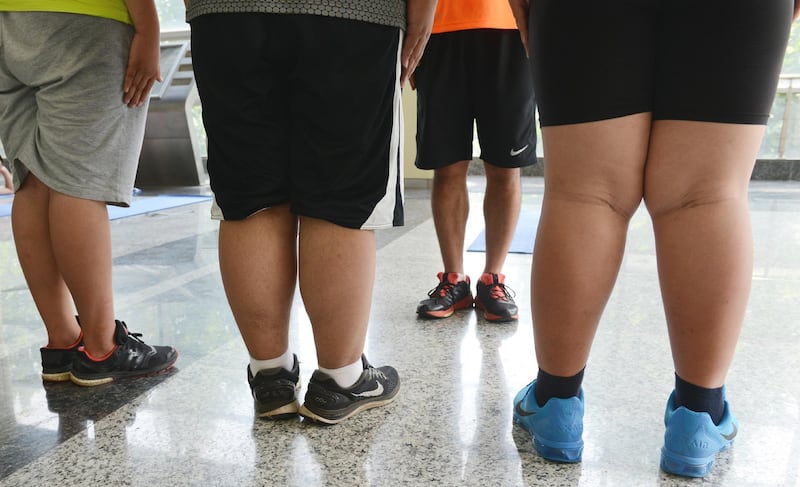Abu Dhabi’s main government hospital will begin to offer intragastric balloon surgery to tackle obesity in children as young as 11.
Gastroenterologist Dr Ahmad Jazzar, who initiated the programme, will start the surgery at Sheikh Khalifa Medical City (SKMC) after Ramadan.
The move marks the time the hospital will be offering such weight loss procedures to children and adolescents.
The procedure involves the insertion of a thin tube down the throat which is loaded with a balloon. It is placed into the stomach and filled with saline.
The balloon makes the patient feel fuller than they normally would and typically loss of about 10 to 15 per cent of body weight is seen over six months. It is usually removed after three to 12 months.
Before joining SKMC, Dr Jazzar performed over 500 intragastric balloon operations, with his youngest patient being an 11-year-old girl.
“What we care about is that the child is fully developed," he said.
The procedure itself does not have any significant side-effects, according to Dr Jazzar. In the first few days, however, there can be some nausea, vomiting and abdominal pain.
Gastric balloons are usually only fitted in obese adults but a state-run hospital in Yorkshire in the UK ran trials for children several years ago.
Children weighing between 88kg and 127kg - about double the average weight of a child aged 13 to 16 - were eligible for the procedure there.
Recent studies suggest that about 34 per cent of children in the UAE are classified as being either obese or overweight. There are more than 41 million overweight or obese children worldwide, and it is estimated the epidemic will reach 70 million children by 2025.
Increasing rates of obesity in children would suggest an increase in adolescent weight loss procedures, but Dr Jazzar said that high prices get in the way. Intragastric balloons are not covered by insurance and can cost up to Dh15,000 at private hospitals.
In the US and in accordance with FDA regulations, adolescents must have a body mass index (BMI) of over 35 kg/m2 to qualify for a procedure such as this. Dr Jazzar said that as long as “the patient really needs it” then they can have the procedure done.
___________________
Read more:
Mothers' caffeine intake linked to overweight children finds major pregnancy study
UAE supermarkets take action on energy drink sales
The growing obesity epidemic should be tackled
___________________
While considered to be fairly safe with minor side effects, if the balloon is dislodged and passes into the gut, it can cause an obstruction that could lead to problems. In rare cases, the balloon could rupture.
“It is very rare for the balloon to rupture and usually happens if it is left too long. That is why we put a blue dye in the balloon so if it ruptures then their urine will turn blue and the patient would see and call their physician immediately to remove the balloon before it passes through the intestines,” Dr Jazzar said.
There are different types of intragastric balloons and they vary in how long they last in the body for, while some can be swallowed instead of being inserted by an endoscopy. All will be offered at SKMC.
“You chose what you want. There are balloons that last three months, six months and 12 months,” Dr Jazzar said.






